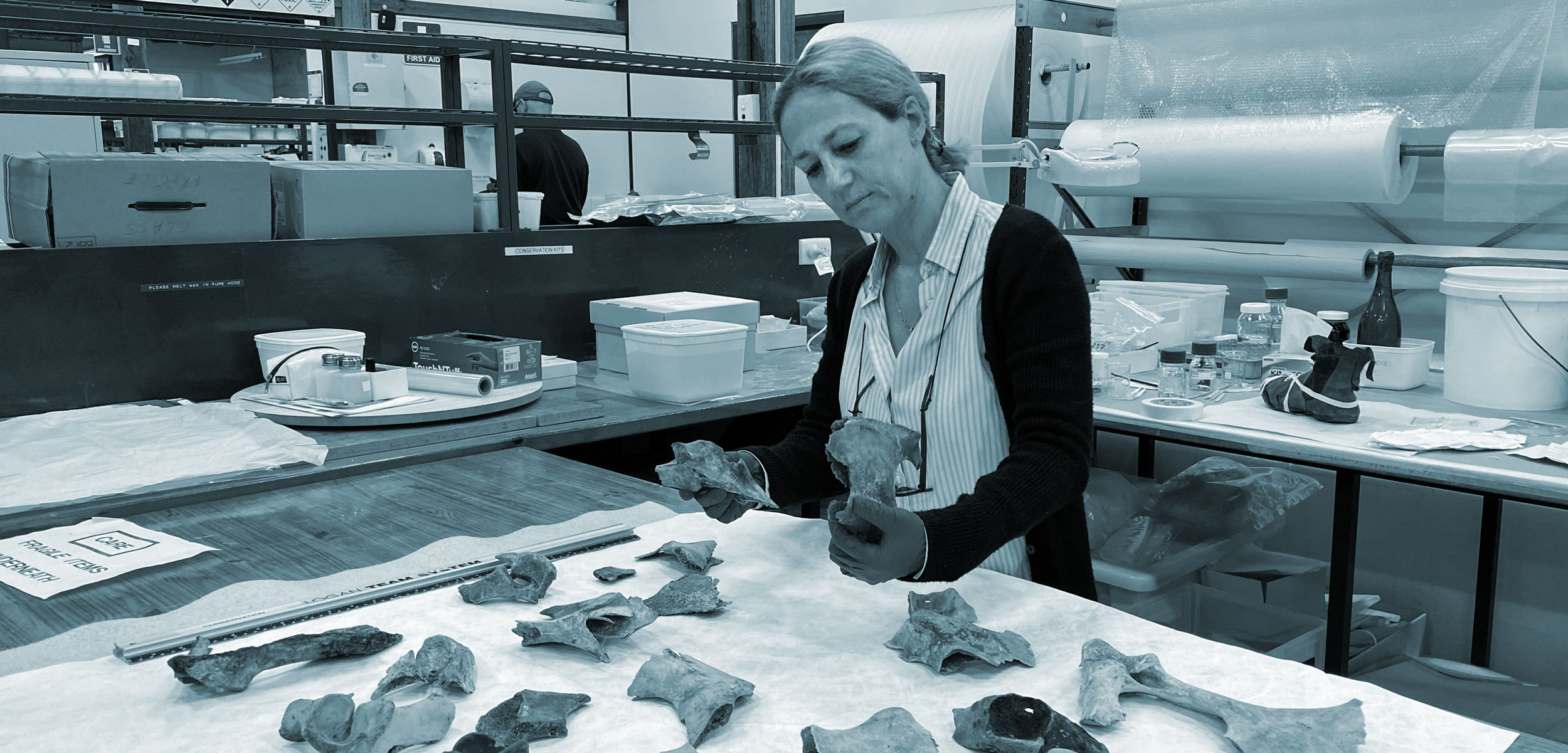Coastal Job: Shipwreck Forensic Analyst
Edda Guareschi pieces together mysteries using bones found underwater.
Article body copy
Some people work in cubicles, others work in kitchens, but the most intriguing workplace of all may be the coast. Meet the people who head to the ocean instead of the office in our Coastal Jobs series.
Trained as a forensic pathologist, Edda Guareschi conducts research for Murdoch University at the Western Australia Shipwrecks Museum, studying bones that have been submerged at sea for centuries.
Every year, thousands of people die in water. Around the world, there are plane crashes, naval disasters, people who disappear at sea, people who drown or die because of crimes.
Of course, people—and animals, too—have always ended up dead in the water. Until fairly recently, they were treated the same way as bodies found on land. But being in the water affects a body in ways you don’t see on land. Decomposition is quite slow, which can lead to the wrong conclusions about the time of death. And there’s still a lot to learn.
I study bones collected from historical shipwrecks that have rested on the seabed for centuries. Recently, our team analyzed sheep, pig, and cow bones that were found in decayed wooden barrels on four trading ships that sank off the coast of Western Australia between 1629 and 1811. The bones came from the salted meat that was brought along as provisions.
Studying these bones presented a unique opportunity. In general, aquatic forensics tries to answer questions such as, How long has a body been in the water? Did the person die there or were they dumped after death? Back in Italy, for example, I had a case where a young man had drowned in a river and was found two months later. Based on the state of the body, I was able to say, yes, it has been in the water all this time.
But it’s very challenging to investigate a body in the water because a lot of the evidence washes away. Bodies also become disarticulated. That means the hands, the feet, the head, and the soft tissue get separated from the torso. When only the bones or the teeth of a victim are found, a mystery can become nearly impossible to solve.
With these bones on the wrecks, we knew exactly how long they had been there. It allowed us to study how bones change when they’re in the water for a long time. They change a lot!
Chemically, bones tend to interact with their environment. They take up elements from their surroundings and leech out others. They also change physically. Bones get broken or cracked in water. But it turned out that even after 300 years, I could see if a lesion had been made by a marine animal that attacked the bone or by a knife or cleaver.
A big surprise came when I put the bones under a micro CT. It’s like the machine used in hospitals, just smaller. It allows you to see the interior of a bone without having to cut into it.
In cavities within the bone, I found these tiny flecks that looked a bit like dust or sand but weren’t. I took them to a colleague, who is a biologist, and it turns out they were microfossils of foraminifera, marine single-celled organisms. So now we know that if you find foraminifera, a bone has definitely been in seawater for quite a while.
It fascinates me how long these bones were underwater. Wars have come and gone, kingdoms have risen and fallen. The bones were there. Then I arrived centuries later, picked them up from a museum cabinet and started reconstructing their story.

